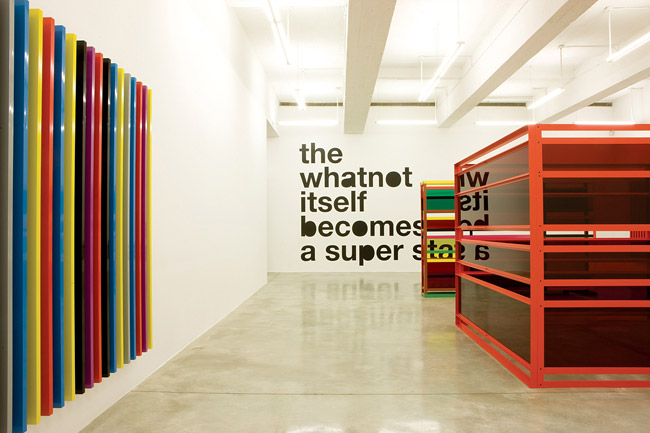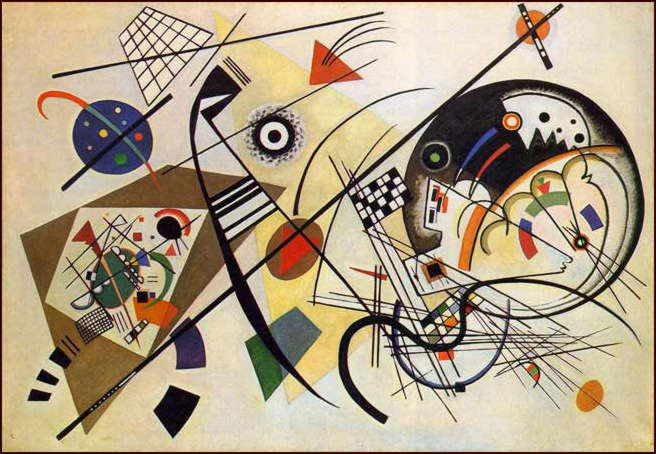Nicholas Bourriaud “The Radicant”
The current state of globalism and globalization has been determined by the expansion of industrialization and modernism. The technologies and information systems created in the 20th century have given rise to the frequency and ease of migration and immigration. The ability to migrate physically and digitally is increasing at an exponential rate or was before the economic downturn.
The concept of globalism has created an environment where the radicants can emerge and take root, transplanting themselves from location to location.
On page 51 Bourriaud writes “The radicant develops in accord with its host soil. It conforms to the latter's twists and and turns and adapts to its surfaces and geological features. It translates itself into the the terms of the space in which it moves. With its at once dynamic and dialogical signification, the adjective “radicant” captures this contemporary subject, caught between the need for a connection with the environment and the forces of uprooting, between globalization and singularity, between identity and opening to the other. It defines the subject as an object of negotiation.”
This quote thus far has given me the clearest definition of a radicant.
Is globalization what Bourriaud believes it to be?
Is globalization a term coined by politicians and CEOs and CFOs to hide a resurgence of imperialism?
Where are the international non western art critics, the Bourriaud's of Asia, Africa, and South America?
By writing about the state of contemporary art and coining our era altermodern isn't Bourriaud setting or changing the course of affairs art is currently facing?
Monday, February 22, 2010
Sunday, February 21, 2010
Globalism vs. Globalization
Globalist Perspective > Global Culture
Globalism Versus Globalization
By Joseph Nye | Monday, April 15, 2002
What is globalization? In contrast, what is globalism? And how do both of these concepts shape our world? Joe Nye, the former Dean of the Harvard University's Kennedy School of Government, outlines the fundamental differences between these two concepts. Globalism describes the reality of being interconnected, while globalization captures the speed at which these connections increase — or decrease.
Globalism versus globalization? Many people would think the two terms refer to the same phenomenon. However, there are important differences between the two.
What is globalism?
Globalism, at its core, seeks to describe and explain nothing more than a world which is characterized by networks of connections that span multi-continental distances.
Globalism seeks to explain nothing more than a world which is characterized by networks of connections that span multi-continental distances.
It attempts to understand all the inter-connections of the modern world — and to highlight patterns that underlie (and explain) them.
In contrast, globalization refers to the increase or decline in the degree of globalism. It focuses on the forces, the dynamism or speed of these changes.
In short, consider globalism as the underlying basic network, while globalization refers to the dynamic shrinking of distance on a large scale.
Globalism is a phenomenon with ancient roots. Thus, the issue is not how old globalism is, but rather how "thin" or "thick" it is at any given time.
The Silk Road: "Thin" globalism
As an example of "thin globalism," the Silk Road provided an economic and cultural link between ancient Europe and Asia. Getting from thin to thick globalism is globalization — and how fast we get there is the rate of globalization.
Of course, the Silk Road was plied by only a small group of hardy traders. Its direct impact was felt primarily by a small group of consumers along the road.
In contrast, the operations of global financial markets today, for instance, affect people from Peoria to Penang. Thus, "globalization" is the process by which globalism becomes increasingly thick/intense.
"Thick" globalism: What's new?
The general point is that the increasing intensity, or thickness, of globalism — the density of networks of interdependence — is not just a difference in degree from the past. An increasing "thickness" changes relationships, because it means that different relationships of interdependence intersect more deeply at more different points.
There are four distinct dimensions of globalism: economic, military, environmental — and social.
At the same time, it is important to note that globalism does not imply universality. After all, the connections that make up the networks to define globalism may be more strongly felt in some parts of the world than in others.
For example, at the turn of the 21st century, a quarter of the U.S. population used the World Wide Web. At the same time, however, only one-hundredth of one percent of the population of South Asia had access to this information network.
Since globalism does not imply universality and given that globalization refers to dynamic changes, it is not surprising that globalization implies neither equity — nor homogenization. In fact, it is equally likely to amplify differences — or at least make people more aware of them.
Economic dimension of globalism — and beyond
Both globalism and globalization are all too often defined in strictly economic terms, as if the world economy as such defined globalism. But other
Based on the historic evidence, we should expect that globalism will be accompanied by continuing uncertainty.
forms are equally important. There are four distinct dimensions of globalism: economic, military, environmental — and social.
Economic globalism involves long-distance flows of goods, services and capital and the information and perceptions that accompany market exchange.
These flows, in turn, organize other processes linked to them. One example of economic globalization is low-wage production in Asia for the United States and European markets. Economic flows, markets and organization — as in multinational firms — all go together.
The environmental dimension
Environmental globalism refers to the long-distance transport of materials in the atmosphere or oceans or of biological substances such as pathogens or genetic materials that affect human health and well-being.
In contrast, examples of environmental globalization include the accelerating depletion of the stratospheric ozone layer as a result of ozone-depleting chemicals — or the spread of the AIDS virus from central Africa around the world beginning at the end of the 1970s.
The military dimension
Military globalism refers to long-distance networks in which force, and the threat or promise of force, are deployed. A well-known example of military globalism is the "balance of terror" between
We should not fear that globalism will lead to homogenization. Instead, it will expose us to the differences that surround us.
the United States and the Soviet Union during the Cold War — a strategic interdependence that was both acute and well-recognized.
What made this interdependence distinctive was not that it was totally new — but that the scale and speed of the potential conflict arising from interdependence were so enormous.
Military globalization manifested itself in recent times in the tragic events of September 11. Here, geographical distances were shrunk as the lawless mountains of Afghanistan provided the launching pad for attacks on New York and Washington — some 4,000 miles away.
Social and cultural globalism
The fourth dimension is social and cultural globalism. It involves movements of ideas, information, images and of people, who of course carry ideas and information with them.
Examples include the movement of religions — or the diffusion of scientific knowledge. In the past, social globalism has often followed military and economic globalism.
However, in the current era, social and cultural globalization is driven by the Internet, which reduces costs and globalizes communications, making the flow of ideas increasingly independent of other forms of globalization.
Why are these divisions useful?
The division of globalism into separate dimensions, as presented above, is inevitably somewhat arbitrary. Nonetheless, it is useful for analysis, because changes in the various dimensions of globalism do not necessarily go together. For example, economic globalism rose between 1850 and 1914 — and fell between 1914 and 1945.
Based on the historic evidence, we should expect that globalism will be accompanied by continuing uncertainty.
However, at the same time as economic globalism was declining during the two World Wars, military globalism rose to new heights — as did many aspects of social globalism.
Take, for example, the worldwide influenza epidemic of 1918-19, which took 21 million lives. It was propagated by the flows of soldiers around the world.
Does this suggest that globalism declined or rose between 1914 and 1945? It depends on the dimension, or sphere, of globalism one is referring to.
Without a specifying adjective, general statements about globalism are often meaningless — or misleading. The same applies when talking about globalization or globalism today.
Entering a world of uncertainty
Based on the historic evidence, we should expect that globalism will be accompanied by continuing uncertainty.
There will be a continual competition between increased complexity and uncertainty on the one hand — and efforts by governments, market participants and others to comprehend and manage these systems on the other.
In conclusion, we should not expect — or fear — that globalism will lead to homogenization. Instead, it will expose us more frequently and in more variations to the differences that surround us.
Globalism Versus Globalization
By Joseph Nye | Monday, April 15, 2002
What is globalization? In contrast, what is globalism? And how do both of these concepts shape our world? Joe Nye, the former Dean of the Harvard University's Kennedy School of Government, outlines the fundamental differences between these two concepts. Globalism describes the reality of being interconnected, while globalization captures the speed at which these connections increase — or decrease.
Globalism versus globalization? Many people would think the two terms refer to the same phenomenon. However, there are important differences between the two.
What is globalism?
Globalism, at its core, seeks to describe and explain nothing more than a world which is characterized by networks of connections that span multi-continental distances.
Globalism seeks to explain nothing more than a world which is characterized by networks of connections that span multi-continental distances.
It attempts to understand all the inter-connections of the modern world — and to highlight patterns that underlie (and explain) them.
In contrast, globalization refers to the increase or decline in the degree of globalism. It focuses on the forces, the dynamism or speed of these changes.
In short, consider globalism as the underlying basic network, while globalization refers to the dynamic shrinking of distance on a large scale.
Globalism is a phenomenon with ancient roots. Thus, the issue is not how old globalism is, but rather how "thin" or "thick" it is at any given time.
The Silk Road: "Thin" globalism
As an example of "thin globalism," the Silk Road provided an economic and cultural link between ancient Europe and Asia. Getting from thin to thick globalism is globalization — and how fast we get there is the rate of globalization.
Of course, the Silk Road was plied by only a small group of hardy traders. Its direct impact was felt primarily by a small group of consumers along the road.
In contrast, the operations of global financial markets today, for instance, affect people from Peoria to Penang. Thus, "globalization" is the process by which globalism becomes increasingly thick/intense.
"Thick" globalism: What's new?
The general point is that the increasing intensity, or thickness, of globalism — the density of networks of interdependence — is not just a difference in degree from the past. An increasing "thickness" changes relationships, because it means that different relationships of interdependence intersect more deeply at more different points.
There are four distinct dimensions of globalism: economic, military, environmental — and social.
At the same time, it is important to note that globalism does not imply universality. After all, the connections that make up the networks to define globalism may be more strongly felt in some parts of the world than in others.
For example, at the turn of the 21st century, a quarter of the U.S. population used the World Wide Web. At the same time, however, only one-hundredth of one percent of the population of South Asia had access to this information network.
Since globalism does not imply universality and given that globalization refers to dynamic changes, it is not surprising that globalization implies neither equity — nor homogenization. In fact, it is equally likely to amplify differences — or at least make people more aware of them.
Economic dimension of globalism — and beyond
Both globalism and globalization are all too often defined in strictly economic terms, as if the world economy as such defined globalism. But other
Based on the historic evidence, we should expect that globalism will be accompanied by continuing uncertainty.
forms are equally important. There are four distinct dimensions of globalism: economic, military, environmental — and social.
Economic globalism involves long-distance flows of goods, services and capital and the information and perceptions that accompany market exchange.
These flows, in turn, organize other processes linked to them. One example of economic globalization is low-wage production in Asia for the United States and European markets. Economic flows, markets and organization — as in multinational firms — all go together.
The environmental dimension
Environmental globalism refers to the long-distance transport of materials in the atmosphere or oceans or of biological substances such as pathogens or genetic materials that affect human health and well-being.
In contrast, examples of environmental globalization include the accelerating depletion of the stratospheric ozone layer as a result of ozone-depleting chemicals — or the spread of the AIDS virus from central Africa around the world beginning at the end of the 1970s.
The military dimension
Military globalism refers to long-distance networks in which force, and the threat or promise of force, are deployed. A well-known example of military globalism is the "balance of terror" between
We should not fear that globalism will lead to homogenization. Instead, it will expose us to the differences that surround us.
the United States and the Soviet Union during the Cold War — a strategic interdependence that was both acute and well-recognized.
What made this interdependence distinctive was not that it was totally new — but that the scale and speed of the potential conflict arising from interdependence were so enormous.
Military globalization manifested itself in recent times in the tragic events of September 11. Here, geographical distances were shrunk as the lawless mountains of Afghanistan provided the launching pad for attacks on New York and Washington — some 4,000 miles away.
Social and cultural globalism
The fourth dimension is social and cultural globalism. It involves movements of ideas, information, images and of people, who of course carry ideas and information with them.
Examples include the movement of religions — or the diffusion of scientific knowledge. In the past, social globalism has often followed military and economic globalism.
However, in the current era, social and cultural globalization is driven by the Internet, which reduces costs and globalizes communications, making the flow of ideas increasingly independent of other forms of globalization.
Why are these divisions useful?
The division of globalism into separate dimensions, as presented above, is inevitably somewhat arbitrary. Nonetheless, it is useful for analysis, because changes in the various dimensions of globalism do not necessarily go together. For example, economic globalism rose between 1850 and 1914 — and fell between 1914 and 1945.
Based on the historic evidence, we should expect that globalism will be accompanied by continuing uncertainty.
However, at the same time as economic globalism was declining during the two World Wars, military globalism rose to new heights — as did many aspects of social globalism.
Take, for example, the worldwide influenza epidemic of 1918-19, which took 21 million lives. It was propagated by the flows of soldiers around the world.
Does this suggest that globalism declined or rose between 1914 and 1945? It depends on the dimension, or sphere, of globalism one is referring to.
Without a specifying adjective, general statements about globalism are often meaningless — or misleading. The same applies when talking about globalization or globalism today.
Entering a world of uncertainty
Based on the historic evidence, we should expect that globalism will be accompanied by continuing uncertainty.
There will be a continual competition between increased complexity and uncertainty on the one hand — and efforts by governments, market participants and others to comprehend and manage these systems on the other.
In conclusion, we should not expect — or fear — that globalism will lead to homogenization. Instead, it will expose us more frequently and in more variations to the differences that surround us.
Tuesday, February 16, 2010
Walter Benjamin responces
a) The history, the mythology, presence and personality could be considered the aura of a work of art.
b, c) Mechanical reproduction allowed artists to disembark from tradition and the confines of an apprenticeship. Mechanical reproduction changed the way in which all types of work were fabricated. Photography and the moving image captured reality without the need to have any particular skill. Of course there were technical aspects which needed some training but that did not compare to the decades of training needed to become an accomplished painter or sculptor who could render the world around them with simple tools and materials. This began the democratization of art. Benjamin believed that artists depended on ritual, the mystery behind the genius of art to give importance to the artist. The camera and mechanization stripped the ritual away to reveal the parasitical nature of the artist.
d) Magnetic tape, digital recording of light and sound, rapid prototyping, digital editing, rendering and programming are some of the processes which are changing the way we currently produce art.
b, c) Mechanical reproduction allowed artists to disembark from tradition and the confines of an apprenticeship. Mechanical reproduction changed the way in which all types of work were fabricated. Photography and the moving image captured reality without the need to have any particular skill. Of course there were technical aspects which needed some training but that did not compare to the decades of training needed to become an accomplished painter or sculptor who could render the world around them with simple tools and materials. This began the democratization of art. Benjamin believed that artists depended on ritual, the mystery behind the genius of art to give importance to the artist. The camera and mechanization stripped the ritual away to reveal the parasitical nature of the artist.
d) Magnetic tape, digital recording of light and sound, rapid prototyping, digital editing, rendering and programming are some of the processes which are changing the way we currently produce art.
Monday, February 15, 2010
Sunday, February 14, 2010
Questions and comments on Post Production
Who retains authorship on remixed work?
What role does the gallery or museum play in a post postmodern world?
Is there enough distance between the original work and the remixed or post produced work?
If we are no longer producing original works won't we deplete our resources from which to remix and remake?
If the space in which we view or experience work and become the willing participants is only around for the duration of the show is there anyway in which to capture and record that experience? Will another viewer be able to experience that work in the future and still interpret it the same way? If that work was only there for the moment or the duration of the exhibition is it even viable to discuss a work which no longer exists and wasn't mean to?
What role does the gallery or museum play in a post postmodern world?
Is there enough distance between the original work and the remixed or post produced work?
If we are no longer producing original works won't we deplete our resources from which to remix and remake?
If the space in which we view or experience work and become the willing participants is only around for the duration of the show is there anyway in which to capture and record that experience? Will another viewer be able to experience that work in the future and still interpret it the same way? If that work was only there for the moment or the duration of the exhibition is it even viable to discuss a work which no longer exists and wasn't mean to?
Monday, February 1, 2010
Modern Post Assignment
#2 Post-Minimalism - late 1960s-1970s
Post-painterly Abstraction - 1964-Present
Post-Modernism - 1970s-mid 1980s
Post-Pop
Post- Punk
Post- Expressionism
#3
Modernism is a reaction to the developments in technology and science of the late 19th and early 20th centuries. Artists began to react to new inventions which dramatically and rapidly changed their world. The advent of the airplane, telecommunication, radio, television, photography, motion pictures, radar, the assembly line and mass production the solid fuel rocket, internal combustion engines, jet engines, vaccines and modern surgery and anesthetics created a world that is much smaller than the world of the l9th century. Artists could no longer get by with a formal recording and representation of the world at hand. Artists needed to catch up and react to a pace that was accelerating past them. Consumerism for the the masses was changing the way we looked at art and the way in which it was created.
Modernism ended with the explosion of the first hydrogen bomb at the end of WWII.
Critics
Clement Greenberg
Thomas B Hess
Fry Bell
Roger Clive
Peggy Guggenheim
#4
The Post Modern movement began in the early 1960's
Post Modernism is and expression of the idea that nothing is real that everything is a simulation. God is destroyed and therefore nothing can be created or destroyed.
Post Modernism is alive and well.
Anything goes therefore there is no enveloping aesthetic but rather an anti aesthetic.
Prominent artist include Paul McCarthy, Eva Hesse, Damian Hirst, Damian Ortega, Rachel Whiteread, Tara Donnovan, Peta Coine.
#5 The art movement of 2010 could be considered a Neo Renaissance or a new modern era. The digital world and an ever shrinking global community and a global community which is increasingly combining it's cultural and biological DNA defines the paths which we are taking.
New forms of media and simulated human interaction are the aesthetic principle on which our art will be made. The use of digital design and rapid prototyping, desktop or web publishing will open the doors to many more creative practices.
#2 Post-Minimalism - late 1960s-1970s
Post-painterly Abstraction - 1964-Present
Post-Modernism - 1970s-mid 1980s
Post-Pop
Post- Punk
Post- Expressionism
#3
Modernism is a reaction to the developments in technology and science of the late 19th and early 20th centuries. Artists began to react to new inventions which dramatically and rapidly changed their world. The advent of the airplane, telecommunication, radio, television, photography, motion pictures, radar, the assembly line and mass production the solid fuel rocket, internal combustion engines, jet engines, vaccines and modern surgery and anesthetics created a world that is much smaller than the world of the l9th century. Artists could no longer get by with a formal recording and representation of the world at hand. Artists needed to catch up and react to a pace that was accelerating past them. Consumerism for the the masses was changing the way we looked at art and the way in which it was created.
Modernism ended with the explosion of the first hydrogen bomb at the end of WWII.
Critics
Clement Greenberg
Thomas B Hess
Fry Bell
Roger Clive
Peggy Guggenheim
#4
The Post Modern movement began in the early 1960's
Post Modernism is and expression of the idea that nothing is real that everything is a simulation. God is destroyed and therefore nothing can be created or destroyed.
Post Modernism is alive and well.
Anything goes therefore there is no enveloping aesthetic but rather an anti aesthetic.
Prominent artist include Paul McCarthy, Eva Hesse, Damian Hirst, Damian Ortega, Rachel Whiteread, Tara Donnovan, Peta Coine.
#5 The art movement of 2010 could be considered a Neo Renaissance or a new modern era. The digital world and an ever shrinking global community and a global community which is increasingly combining it's cultural and biological DNA defines the paths which we are taking.
New forms of media and simulated human interaction are the aesthetic principle on which our art will be made. The use of digital design and rapid prototyping, desktop or web publishing will open the doors to many more creative practices.
Subscribe to:
Posts (Atom)

















